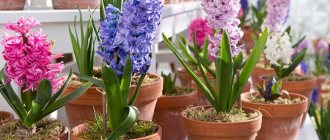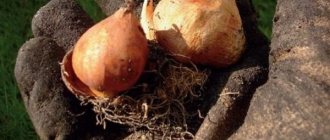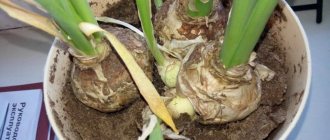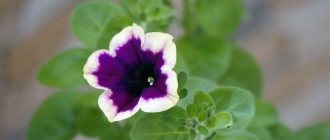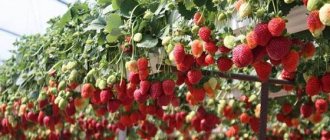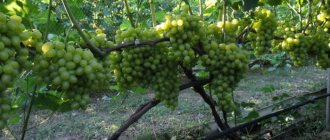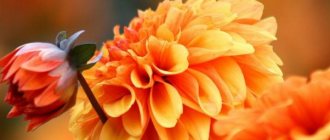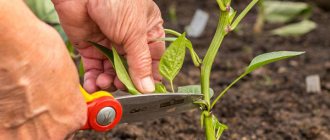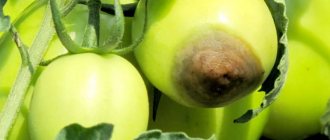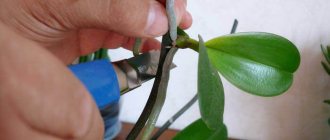- October 7, 2018
- Gardening tips
- Legina Marina
Hyacinth is a plant that delights both beginners and seasoned gardeners. Its name translates as “rain flower”. It really likes moisture, although it can survive a little drought. The bulb, which is a large bud, helps him in this.
The plant consists of fleshy leaves and a dormant shoot. Before the beginning of the growing season, this shoot is fed from the reserves of the bulb itself. It is this that ensures rapid development and spring growth. It is no secret that all bulbous plants must be dug up after flowering and provided with a full period of rest. Today we will talk about how to store hyacinth bulbs.
Rhythm of life
Half of the success depends on whether these rules are followed. Hyacinth has its own rhythm of life, so the future owner should definitely become familiar with it. This will avoid mistakes. In principle, it is not so difficult to figure out how to store hyacinth bulbs; the main thing is to know the annual cycle of the plant.
After the plant fades, you need to cut off the wilted inflorescence from the bulb.
Continue watering the soil for some time until the leaves completely dry out.
After this, watering is stopped, and the bulbs from the pot are transplanted. For the next three months, it is best to transplant them to a dark, cool place. During this time, the hyacinth should gain strength and form new bulbs.
A new cycle begins when fresh green leaves are produced. Now the bulb is planted in fresh soil and moved closer to the window. Sunlight is required for further growth and development.
But this is a theory, but in practice a million more questions arise, each of which requires an answer. Therefore, we will figure out how to store hyacinth bulbs.
Forcing at home
Caring for Hyacinth is not difficult, but you need to follow some rules. The first rule is the choice of the bulb from which the flower will be grown. The size of the bulb in diameter must be at least 5 cm, it must be dense, not affected by rot, diseases and insects. The second rule is to create the necessary atmosphere for the successful cultivation of a flower.
Choosing a pot and soil for planting bulbs
The vessel for diluting Hyacinth should be medium in size and have drainage holes at the bottom. From 1 to 3 bulbs sit in one container. They should not come into contact with each other or with the walls of the pot.
The bulb is not completely placed in the soil; its upper part should not be covered. The substrate used is one that has a neutral acidity level, since high acidity is not suitable for the flower. To avoid rotting of the bulb, the surface of the soil is also covered with sand.
After planting the bulbs, they need to create a dormant period of about two months. The flowerpot is placed in a dark, cool place, perhaps even in the refrigerator, the temperature should be +5-7 degrees. The soil needs to be watered occasionally to maintain constant moisture. During this time, the bulbs take root well and will produce flower stalks in the future. After the bulbs produce a pair of leaves, the flower is transferred to a bright place with a temperature no higher than +15 degrees.
Care during flowering
The flowering period of Hyacinth lasts on average about two weeks; during this period care is required, thanks to which the flowering will be lush and longer.
Lighting
Hyacinth loves light very much; it needs it at least 15 hours a day. If you place it in a place where there is not enough light, you need to additionally use artificial lighting sources. On hot summer days, the plant needs to be shaded to avoid direct sunlight.
Temperature
The best temperature for growing Hyacinth is +20-22 degrees. It is not recommended to keep the flower close to heating devices. You should also avoid drafts, as they can lead to the death of the flower.
Watering and spraying
The soil in the pot should always be slightly moist, this is especially important during flowering, active growth and wintering. You should also avoid stagnation of water, which can lead to rotting of the bulb and the development of fungal diseases.
To do this, water is poured from the pan immediately after watering. Another important point is the method of watering itself: in order to ensure that water does not fall on the bulb, in the axils of the leaves and buds, the water must be poured near the edge of the pot.
It is not recommended to spray the flower; this has an especially bad effect on its condition during the flowering period.
Top dressing
The plant needs frequent feeding, about twice a month. To do this, use any universal fertilizer for indoor bulbous plants. Before feeding, you need to water the flower.
Care after flowering
Hyacinth, like all other flowering plants, fades over time. But in this case, its vital activity does not stop, but the care of the flower simply changes.
- First, the peduncle is cut off, the leaves remain, and caring for the flower continues until they die completely. After this, it is necessary to dry the bulbs and place the plant for a period of rest. To do this, the flower is removed from the pot, the roots are cleared of the soil, and the top of the plant is cut off at a distance of about one centimeter from the bulb.
- The bulb is sprayed with a disinfectant solution, for example Fundazol, to avoid infection and the top unnecessary peel is removed. Then the bulb is dried, at which time it must be turned periodically to dry completely.
- When the bulb is completely dry, you need to wrap it in paper or sawdust and place it in a dark, dry place for 2-3 months, after which it can be planted again.
Video about caring for Hyacinth after flowering
Very often, flower growers adjust the flowering of Hyacinth to a certain time of the year, for example, to get an inflorescence on March 8, this must be done in October. For this purpose, a manipulation such as forcing is used - in this case, the bulbs are specially removed from a dormant state.
In this case, the planted bulbs are covered with a bag in which a hole is made so that the plant can breathe. Then the flower is grown, as with ordinary planting of bulbs.
Rest period is very important
The duration of flowering depends on the variety, as well as on weather conditions. If it is warm and humid, the bulbs will continue to grow even during flowering. This means it will last much longer. But as soon as the growth and development of the buds ends, a new stage begins. This is the growth of the bulb and the storage of nutrients. The better this stage goes, the more beautiful the flowering will be next year. And for its successful completion, you need to familiarize yourself with the recommendations regarding the care of this important part of the flower. It is necessary to properly store hyacinth bulbs after digging, and ensure their further successful growth and development.
Features of a flowering plant
Hyacinth is one of the first spring flowers. Early varieties bloom in open ground from mid-March , middle varieties - from April, and late varieties bloom in May.
Flowering period is from one to two weeks. At home, the sequence of the plant’s biorhythms is maintained. However, using the forcing method, you can achieve flowering by a certain date - Christmas, March 8th.
Maintaining the temperature at 15-16oC increases the duration of hyacinth flowering from 2 to 4 weeks.
Why doesn't it bloom and how to fix it?
Sometimes it happens that a plant in a pot does not bloom , despite all the efforts made. The reasons for the lack of flowering and ways to solve the problem are indicated in the table.
| Why doesn't it bloom in a pot?? | What to do? |
| The optimal flowering temperature is 16-18oC. If the room is too hot, flowering may not occur or may end very quickly. | Take the pot out to a glassed-in loggia, balcony, terrace during the day |
| The absence of a drainage layer of sand or other material leads to rotting of the onion | If the bulb is not dead, cut off the damaged parts, treat with fungicide, sprinkle with coal and repeat the planting cycle again. A positive result is not guaranteed |
| The plant lacks sun and minerals | Move to the sun and fertilize |
| Poor quality bulbs (old, spoiled, diseased). | Change planting material |
Hyacinth is a demanding flower to care for. Even a slight deviation from the correct growing technology threatens a decrease in flowering properties and the death of the entire plant.
For a plant in open ground, there are some nuances as to why there are no flowers. What happened and how to correct the matter is shown in the table.
| Why doesn't it bloom outside?? | What to do? |
| The bulbs were not dug up in the summer | Dig up and store bulbs annually |
| Plants were planted in open ground too early or late | The best time for planting in the soil is the last days of September, the beginning of October |
| Flowers were planted without a sand layer, water stagnates in the beds | Be sure to add a 3-5 cm layer of river sand before planting. |
| The soil is acidic, dense, clayey | Carry out measures to neutralize and loosen the soil |
| Fresh manure was applied to the planting area | Use only well-rotted humus and mineral fertilizers |
| Lots of weeds, especially weeds | Thorough regular weeding |
| Planted flowers in a place affected by diseases from previous crops | Do not plant hyacinths in areas previously occupied by other bulbs, potatoes, and tomatoes. |
If in the spring the hyacinths did not even produce leaves, then the “non-working” bulbs are probably affected by pests. They need to be dug up and burned. Plant new flowers in another place.
Pests and infections
Pests:
- the larvae of flower flies gnaw the bottom and scales of the bulbs, the plant withers and dies;
- aphids and thrips suck the juices from the hyacinth - the buds fall off before they have time to bloom;
- mole crickets gnaw underground passages, not sparing any roots or plant bulbs that get in their way;
- the root mite penetrates the bulb through the bottom, preferring initially damaged and weak specimens;
- Stem and root-knot nematodes make the bulbs soft, and the plants affected by them are severely retarded in development.
In addition to pests, hyacinths are attacked by viral, bacterial and fungal infections. Do not despair; effective methods of combating each malicious agent have been developed.
How many more times will it form buds if it has already bloomed?
Hyacinth is a bulbous perennial whose lifespan reaches 10 years. After one flowering, another is possible the next year, but only with proper storage of the bulbs, planting and subsequent care. Unfortunately, purchased flowering hyacinths often no longer bloom after intensive forcing before sale.
Hyacinth has bloomed
When the arrow dries out, it needs to be removed. Sometimes flower growers leave it, but this is completely wrong. The plant will waste nutrients on them, which will affect the condition of the bulb. That is, caring for hyacinths after flowering involves immediate pruning of the shoots. Moreover, this must be done even before the formation of seed pods. Otherwise they will weaken the bulb.
Moreover, Dutch flower growers recommend removing even the flower shoot from plants of the first and second years of forcing, so that it does not take away nutrients. After all, the larger and healthier the bulb, the more luxurious the inflorescences will be on future shoots.
Hyacinth leaves
In addition to the flower arrow, the plant also has leaves. There is no need to remove them. Hyacinth receives nutrients not only from the soil, but also through regular fertilizing and watering. The leaves should dry out naturally. To do this, from the beginning of June the plant stops watering. After about a month, the leaves will dry completely. Then they can be carefully separated from the bulb. Now you can select a suitable box, fill it with fresh soil, sawdust or sand, and mulch the top.
Bulbs after flowering
Experienced gardeners recommend not leaving them in one place for more than three years. Even in the southern regions this leads to aging of the bulb. On the other hand, during this time they manage to grow in size and babies appear on them. In this case, they can be dug up and planted.
But Dutch breeders (they are well versed in this matter!) recommend not leaving the bulbs in the ground after flowering and in the first year, especially if this concerns fastidious varieties. After wintering they may not bloom well. Therefore, it is best to dig up the bulbs, inspect, sort and process them. After this, they can be sent for storage.
We are approaching the most difficult and important stage in growing hyacinths. Every gardener should know how to store hyacinth bulbs at home. This ensures good blooms year after year. Purchased or pre-dug bulbs must first be thoroughly dried, freed from soil residues, and cleared of excess scales. Be very careful because babies may appear under the scales.
How to dig up bulbs correctly
At first glance, there is nothing complicated in this procedure. But if we decide to thoroughly study how to preserve hyacinth bulbs, then we need to discuss this issue in detail. Digging up primroses helps preserve planting material. Bulbs tend to dry out and degenerate when left in the soil continuously. That is, digging stimulates life expectancy. By regularly repeating this procedure, you can enjoy the flowering of the same bulb for ten years.
The bulbs are dug up 2 months after all the leaves have completely dried. A few days before this, watering and fertilizing the plants is stopped. It is important to carefully clean the dug up bulbs from the soil, rinse them in warm water and leave them in the air to dry.
It is necessary to prepare ventilated containers in advance. You can take wood or cardboard. But polyethylene or sealed containers are absolutely not suitable. Free access of air to the bulbs is a prerequisite. The dried bulbs are sorted out and carefully inspected for damage or damage from diseases and pests. Excess scales are removed. Grown-up children are separated from their mother, and immature children are left behind. Typically, ripening occurs during the dormant period.
Here we come to how to store hyacinth bulbs after flowering. They need to be placed at a short distance from each other so that the scales do not touch. Laying in two layers is allowed if there is a lot of planting material. But in this case, the bulbs need to be constantly turned over to ensure even drying. After drying, it may be necessary to separate the flakes again.
How to avoid mistakes?
Even the most experienced florist is not immune from mistakes. Especially if we are talking about such a capricious plant as hyacinth. You can avoid common problems by arming yourself with knowledge about the characteristics of the growth and development of bulbous perennials.
Gave babies in a potty
Babies on faded hyacinth are not a mistake, but a great success. If the baby is small, then it is not separated from the mother bulb , but is stored together with it. Onions with small children are stored and planted carefully, as small things can cause putrefactive processes.
Large children are separated and stored separately. They are planted separately for growing. A large baby will not produce a peduncle in the first year of planting; it will enlarge the bulb due to the growth of green mass. Flowering will begin from the second year of life.
The leaves have turned yellow
Causes of yellowed perennial foliage:
- the plant is preparing for a period of dormancy;
- little watering, too hard water;
- hot in the room, dry air;
- too cold, the plant is frostbitten;
- lack of sunlight;
- the soil in the pot is poor in nutrients, the plant needs feeding;
- roots damaged by root mite or nematode.
Before doing anything, you need to identify the root cause of premature wilting and eliminate it as far as possible.
What happens if you don’t dig it up in the summer, but leave it in the ground?
Some gardeners are of the opinion that it is not necessary to dig up hyacinths every summer. It is permissible to leave the bulbs in the ground if they have been growing there for only one year. This opinion is wrong. The bulbs must be removed from the ground every summer. Consequences if you leave planting material in moist, cool soil:
- the bulb will not be able to make nutrient reserves;
- damage by rot, viruses, insects, and other pests;
- mice and rats will gnaw;
- the gardener will not be able to know the quality of the planting material if he leaves it in the ground;
- old bulbs lose their ability to bloom.
In addition, bulbs forgotten in the ground can begin to grow in early autumn. Young leaves will be caught by autumn frosts, and the plant is guaranteed to die . Even if the hyacinth survives, the peduncle will be weak, short, with a small number of relatively small, ugly flowers.
What happens if you immediately put it in the soil without transferring it?
Transshipment is necessary to restore the bulb's potential. After flowering, the hyacinth with green leaves is carefully removed with a lump of earth and planted in a spacious pot with drainage and fertilized soil. Without transshipment, the onions will not receive the required amount of useful elements and will not lay the foundation for the future peduncle.
Normal flowering of the plant without transshipment is unlikely to occur. Perhaps a frail stem with a sparse cluster of inflorescences will appear.
Temperature
In order for the bulbs to rest well and produce strong shoots in the future, you need to provide them with good rest. First they need to be placed in a cool place. Then gradually reduce the temperature to ensure a smooth transition to the rest period. Therefore, it is important to immediately think about where to store hyacinth bulbs.
The room should not be humid and free air circulation is very important. In August, hyacinths can be planted in the ground for the winter. Then the gradual decrease in night temperatures will do all the work for you. You can grow hyacinth in a pot so that it blooms by a certain date.
Let's sum it up
Therefore, to enjoy the vibrant colors of these wonderful plants, it is imperative to provide sufficient rest period for the bulbs. When forcing, temperature and appropriate humidity are very important. Optimal lighting and appropriate fertilizing will be an excellent help for your bulbs to produce beautiful flowers. Growing perennial hyacinth is a little troublesome, but it will delight you with its magnificent flowers for many years. But if you don't have enough time to provide the bulbs with a regular dormant period, it is better to plant annual bulbs and then safely throw them away.
Three important steps
- For the first 8-9 weeks, the air temperature is maintained within +20 °C. During this time, the scales will dry out. The duration can be shortened by raising the temperature to +30 degrees. In this case, it is recommended to cover the bulbs with sphagnum moss. This retains the necessary moisture and prevents the bulbs from drying out.
- Over the next four weeks, the temperature is gradually lowered to +18 degrees, while maintaining a high level of humidity. To do this, planting material and sphagnum are periodically moistened with warm water.
- In the last week, the temperature should be lowered to +10 degrees. It is extremely important to avoid sudden changes in air temperature to avoid stressing the bulbs. If you live in a region with a mild climate, then you can skip this stage, because the temperature regime of the last week increases frost resistance.
Plant bulbs contain oxalic acid. It may cause skin irritation. Therefore, in order to avoid undesirable consequences, you must adhere to personal safety rules.
Characteristics of the flower
Hyacinth is a bulbous plant consisting of a dense bulb and a flowering stem. The flowers are bell-shaped, simple or double, collected in 20-35 pieces in an inflorescence on a stem up to 30 cm high. The flowers have a delicate aroma; when they bloom, they take on a curly appearance. The color of the flower is different: white, yellow, pink, crimson, red, lilac, blue.
Hyacinths bloom in early spring, as soon as the air temperature reaches +15. Flowering directly depends on the color of the hyacinth, blue inflorescences bloom first, then pink, then white, followed by red and purple, and yellow and orange flowers bloom last. The color of the future flower inflorescence can be determined by the color of the scales of the bulb. Hyacinth blooms for 7-12 days, some modern varieties have a flowering duration of up to 20-25 days. The maximum lifespan of a bulb is 10 years.
How to store hyacinth bulbs in the refrigerator
Sometimes you have to really rack your brains to provide the necessary conditions. The apartment is too hot, not everyone has a cellar. And on the bottom shelf the conditions are just right. But you need to take into account that new systems equipped with the No Frost system draw out moisture, which can lead to drying out and death of the bulbs. To prevent this from happening, it is recommended to line the box with slightly moistened moss or peat and periodically spray it with warm water.
We also recommend watching:
- Coleus - planting and care in open ground, photo compositions
An incredibly attractive plant is coleus. Planting and care in open ground, as well as cultivation, are the subject of our conversation. After all, the beauty of its foliage is not inferior to its buds...
- Gladioli: planting and care in open ground, growing experience
Such majestic, proud flowers are gladioli. Planting and care in open ground has its own characteristics. Every year they bloom in midsummer, just in time for...
- Planting an apple tree - basic rules and recommendations
It is perhaps difficult to imagine a garden or summer cottage where there is not a single apple tree. Planting an apple tree is often not limited to one tree; amateur gardeners plant several varieties...
- Planting carrots in spring in open ground: timing, care, pests
For me, planting carrots in open ground in the spring is preparation for the arrival of my granddaughter. She really likes to “crunch” her right at the dacha. Since the plot for this…
- Mirabilis, planting and care, features of growing in open ground
When evening comes after a hot summer day, night flowers begin to smell especially sweet. Mirabilis is considered one of the most attractive representatives of this category. Planting and care,…
How and when to plant hyacinths
Your planting material will gain strength until autumn. At this time, the development of hyacinth bulbs does not stop. How to preserve the maximum amount of them at home? You just need to follow the recommendations provided. In the meantime, we need to prepare a place for the future flower garden. To do this, you need to choose an area with good drainage that is not prone to waterlogging. If this is not available, high beds are used.
The soil is dug up and fertilized in advance. It is best to do this in advance, in the summer. Leave nitrogen fertilizers for the spring; now only potash or organic fertilizers are needed. The rested bulbs are transferred to the flower garden at the end of September or beginning of October. At the same time, avoid planting damaged or diseased bulbs and be sure to treat them with potassium permanganate. Large bulbs are planted to a depth of no more than 18 cm according to a 15 x 15 cm pattern. The thickness of the soil above the top of the bulb should not exceed 5 cm. It is recommended to make a sand cushion under the bed. It will protect against waterlogging.
Planting care
Be sure to mulch the bed. Dry straw, pine needles, sawdust and dry leaves can be used as mulch. After planting, hyacinths are not watered. With the onset of autumn rains they will have enough moisture, and in the spring the melting of snow will allow them to germinate quickly. With the onset of spring days, you need to remove the layer of mulch, because plants will not be able to break through it.
What happens if hyacinth is left in the ground?
When it comes to hyacinths growing in open ground, you don’t have to dig them up every year. In this case, two options are possible:
- Most likely, the bulb will go deeper into the ground, overwinter safely and, under suitable conditions, bloom with the onset of spring.
- It may also be that the plant will bloom again at the end of summer. In this case, the inflorescence raceme will be compacted, the color will be pale, and the stem will be short. This happens due to the depletion of the bulb and the failure of the plant’s life cycles. Such flowering cannot be called full-fledged.
